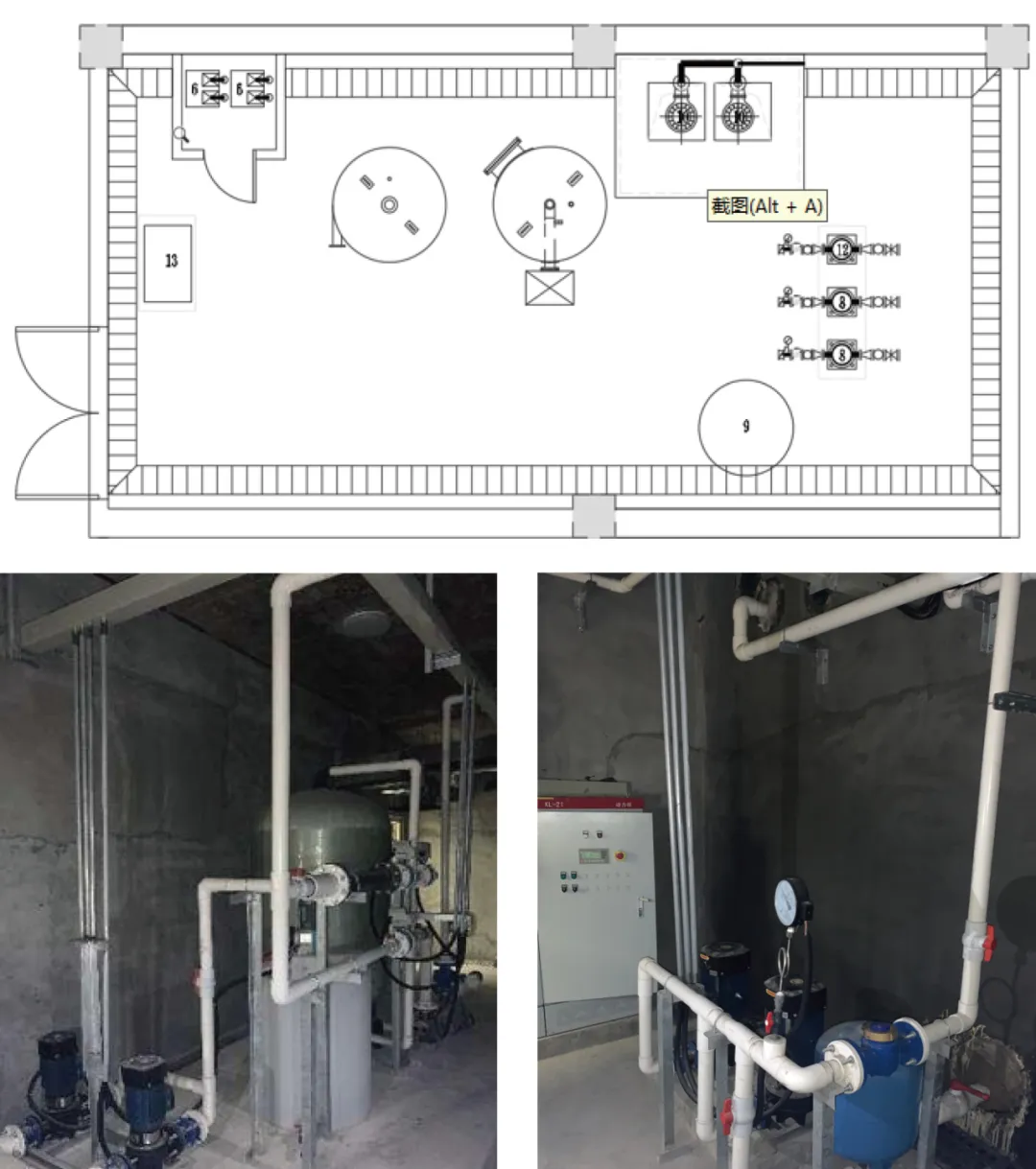China’s push towards sustainable and low-carbon urban development is set out in ambitious policies such as the 14th Five-Year Plan and the “Green Building Creation Action Plan.” These frameworks aim to reduce carbon emissions and promote green practices nationwide, specifically emphasizing improved energy efficiency and environmental health in urban construction. One essential component of this green transition is the innovative use of non-traditional water sources, particularly rainwater, in urban areas.
This article delves into rainwater utilization in Changzhou, a city in Jiangsu Province, examining its current state and potential optimization paths. By analyzing residential, commercial, and public construction projects, we uncover how these projects manage rainwater and identify common challenges and opportunities for improvement.

China’s Path to a Low-Carbon Future
In October 2020, China’s leadership released its comprehensive 14th Five-Year Plan, setting aggressive goals for green and low-carbon development. By 2035, the plan envisions cities across China reaching new sustainability standards, with some areas peaking in carbon emissions as early as 2030. This aligns with the “Green Building Creation Action Plan,” introduced in July 2022, which mandates that by the end of that year, 70% of new urban buildings would be designated green, using resources more efficiently while enhancing public spaces with innovations like sponge city designs and high-efficiency buildings.
One of the critical challenges in meeting these targets is efficient water management, which ties directly to green building requirements. Rainwater harvesting and usage, especially in areas with frequent rainfall, are key strategies to reduce dependency on traditional water sources and minimize urban flooding. This article takes a closer look at Changzhou’s rainwater utilization systems, presenting findings from surveys of local residential projects and evaluating ways to optimize these systems for better efficiency and sustainability.
Survey and Analysis of Rainwater Utilization in Changzhou
Our research focuses on three categories of projects in Changzhou: residential buildings, public structures, and commercial developments. Each category presents unique approaches and challenges in rainwater utilization. Below is a summary of findings from several residential projects across Changzhou’s districts.
Residential Project Surveys
Wujin District Residential Project
This residential complex uses a buried PP module pool paired with an integrated machine room for rainwater collection. The equipment operates effectively but has limitations, such as only providing water during the rainy season and lacking sufficient aesthetics—manhole covers protrude noticeably above the ground, creating visual disruption in the community. Additionally, the machine room’s compact design hinders easy maintenance.
Zhonglou District Residential Project
Similar to the first project, this complex employs a buried PP module pool and integrated machine room, positioned beneath a parking area. The design improves aesthetics as the manhole covers are flush with the ground. Although it primarily supports irrigation within the community, operational data is unavailable as the project is yet to be delivered.
Xinbei District Residential Project
This development deviates from the previous two by incorporating a concrete rainwater pool and an underground machine room situated within the basement. The project integrates rainwater treatment with a large decorative waterscape, a unique feature among the surveyed projects. Maintenance of this system is thorough, ensuring consistent performance. However, like the others, it only provides water during the rainy season and doesn’t meet year-round irrigation needs.
Optimization Strategies for Rainwater Utilization
The insights from Changzhou reveal significant room for improvement in rainwater harvesting design. The three projects reviewed underscore common challenges such as limited storage capacity, seasonal-only water availability, and maintenance difficulties. Here are some potential solutions for optimizing rainwater utilization in future projects across Jiangsu Province and beyond:
Enhanced Storage Solutions
Increasing the capacity and durability of rainwater storage could extend water availability throughout dry periods. Advanced materials and modular designs may allow for larger, more integrated tanks that fit seamlessly into residential and urban landscapes.
Automated System Management
Implementing automated controls and sensors to monitor water levels and quality can ensure efficient operation and timely maintenance alerts, reducing the manual workload and enhancing reliability.
Aesthetic and Functional Integration
Incorporating rainwater systems into urban green spaces or waterscapes can serve dual functions—providing water while enhancing public aesthetics. Such integration reduces visual disruption and aligns with urban beautification efforts under the green building initiatives.
Flexible Seasonal Use Adjustments
Systems that allow for off-season use, potentially by mixing rainwater with other non-potable sources, could maintain utility throughout the year. Additionally, blending with treated greywater could help meet landscaping and cleaning needs when rainfall is scarce.
Economic and Technical Evaluations
Evaluating the cost-benefit ratio of these optimizations is crucial, as some measures may offer substantial long-term savings despite higher initial costs. Detailed economic assessments will help planners and developers make informed decisions on investments in green infrastructure.
Changzhou’s efforts highlight the challenges and promising avenues in adopting rainwater harvesting technology, offering a roadmap for further improvements. By focusing on technical optimizations, aesthetic integration, and extended water use across seasons, Jiangsu Province could become a model for green urban planning in China. As the nation advances toward its ambitious sustainability goals, maximizing non-traditional water source utilization will play an increasingly vital role in creating low-carbon, resilient cities.
Public Construction Projects: Challenges and Insights
In our survey of public projects in Wujin District, we assessed two construction projects with similar rainwater collection systems. Both utilized buried PP module pools coupled with integrated machine rooms, yet they also presented distinct challenges.
First Public Construction Project: Safety and System Limitations
This project features a fully buried rainwater collection system situated in green spaces, with exposed manhole covers that protrude from the ground, detracting from visual harmony and posing a safety risk due to the lack of anti-fall nets. The machine room's layout lacks standardized piping and has no internal drainage, complicating maintenance. While functional for irrigation, this design could be refined for better safety, visual appeal, and ease of use.
Second Public Construction Project: Technical Upgrades Needed
Similar to the first, this project’s rainwater reuse system is located in green areas. It provides water for both sprinkler irrigation and vertical greening, yet suffers from backflow issues. This was attributed to outdated control systems, and operational managers suggested upgrading to an intelligent control system with variable-frequency pumps to optimize water usage and prevent backflow.
Commercial Project Findings: Limited Utilization of Rainwater Systems
The commercial project we reviewed uses an underground PP module pool; however, the design currently restricts its purpose to regulation and storage. Despite meeting local standards, the system does not take full advantage of the collected rainwater, pointing to a missed opportunity for effective reuse. Enhanced design could enable the system to contribute to irrigation or other non-potable uses, maximizing the environmental and economic benefits of rainwater collection.
Identifying Key Issues in Changzhou’s Rainwater Collection Systems
Our analysis across residential, public, and commercial projects in Changzhou revealed several common challenges:
Cost Constraints Impacting Design and Maintenance
Many projects prioritize cost control, resulting in compact, buried machine rooms that lack adequate space for maintenance. Consequently, system durability and efficacy are often compromised, impacting the overall success of these initiatives.
Product Quality and Compatibility
Complex geological conditions, combined with varying product quality, frequently reduce the longevity of buried modular systems. Poor construction practices further exacerbate these issues, leading to shorter-than-expected service lives.
Rainfall Dependency
Projects in regions with low rainfall encounter idle equipment and missed reuse opportunities during dry spells. Addressing this requires adaptable designs that can accommodate local climate conditions.
Management and Maintenance Gaps
Few projects have dedicated maintenance personnel or systems in place to ensure efficient operation. Without professional upkeep, many rainwater systems fall short of their design potential, highlighting a need for better long-term operational planning.
Learning from Success: A Case Study in Changzhou’s Xinbei District
One notable success among the surveyed projects is a residential complex in Xinbei District, where rainwater treatment is managed from an underground machine room integrated into the basement. This design optimizes space utilization, placing the water storage tank in otherwise-unused areas and concealing manholes within landscaped areas. The project also includes dedicated storage for treatment chemicals, stored safely for weekly replenishment. This setup effectively ensures that maintenance is straightforward and that rainwater recycling functions smoothly throughout the year.
Optimization Recommendations for Future Projects
Drawing from both the challenges and successful cases observed, we propose the following optimization measures to enhance rainwater systems in Jiangsu Province:
System Selection
For urban settings like Jiangsu, the design should prioritize underground rainwater treatment rooms located in basement garages or other unused spaces. By utilizing these areas, the systems remain accessible yet unobtrusive, facilitating ease of maintenance and minimizing visual impact.
Material Upgrades for Durability
Consider using alternative materials like silica sand modules in outdoor collection pools. This would improve durability and adapt the systems to the region’s environmental demands.
Professionalized Maintenance and Intelligent Controls
Assigning trained personnel to manage rainwater systems would improve operational reliability. Installing intelligent control systems, particularly in dry seasons, could help monitor water levels, optimize use, and prevent damage from prolonged idleness.
Cost Estimates and Layouts for Optimal Rainwater Systems
Our study included cost estimations for rainwater collection systems to aid in project planning. When using a PP module and a basement machine room with integrated invalid space, the estimated total cost is about 228,500 yuan. If a concrete water reservoir is integrated into unused basement areas, the cost drops to around 155,000 yuan, making it a more economical option with long-term maintenance benefits.
Concluding Recommendations for Regional Adaptation and Efficacy
Given the challenges and successes seen in Changzhou, we propose adaptive guidelines for rainwater reuse designs in Jiangsu Province:
Residential Projects
Opt for a modular pool with an underground treatment room or a concrete pool within the basement to utilize otherwise unused spaces. Outside Jiangsu, projects could continue using modular pools with integrated treatment devices to meet regional needs.
Public Construction Projects
For government buildings, adopt a rainwater system with underground regulating pools, water treatment rooms, and concrete storage tanks for durability and efficiency.
Commercial Projects
A modular pool with an underground treatment room provides an adaptable solution that could be expanded as needed.
Changzhou’s experience with rainwater utilization showcases both the possibilities and pitfalls of green building practices. By implementing targeted design improvements, maintenance protocols, and adaptive technologies, Jiangsu Province can develop more resilient, effective rainwater collection systems, paving the way for a sustainable urban future.
